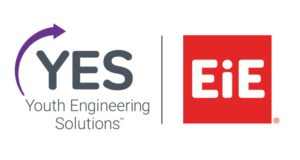YES Middle School Units
YES Middle School engages students in grades 6–8 in hands-on engineering challenges and integrated computer science modules. As they work with peers to generate original solutions, youth see themselves as future STEM professionals. The YES Computer Science Framework invites students to explore computational tools and understand the algorithms that underlie them, equipping them with the skills to succeed in a tech-driven world.
YES Middle School Units
YES Middle School Resources
YES works closely with teachers to develop a suite of resources for each unit. These include:
| Resource | Description |
|---|---|
| Teacher Guide | Contains eight to nine 45–75-minute lessons with a common structure:
|
| Slides | Facilitate classroom projection of guiding questions, discussion prompts, sentence frames, and images. |
| Engineering Notebook | Records students’ observations, sketches, plans, and reflections. |
| Print Materials | Include print materials for group activities such as cards or signs. |
| Spreadsheets | Scaffold data collection and analysis. |
| Multimedia | Videos and images help students connect their work to an authentic, real-world context |
| Vocabulary Cards | Introduce new vocabulary through visual cards that can be posted on an engineering vocabulary wall. |
| Family Resources | Spur conversations about engineering at home and connect students’ learning to their communities |
| Video Playlist | Shows how to prepare and test materials. |
| Materials Kit | Supplies the physical materials needed to teach each lesson. |
| Computer Science Modules | Contain two to three 45-minute lessons that connect to the engineering unit. |
Download brochure.
Our funders
Major support for this project has been provided by MathWorks

